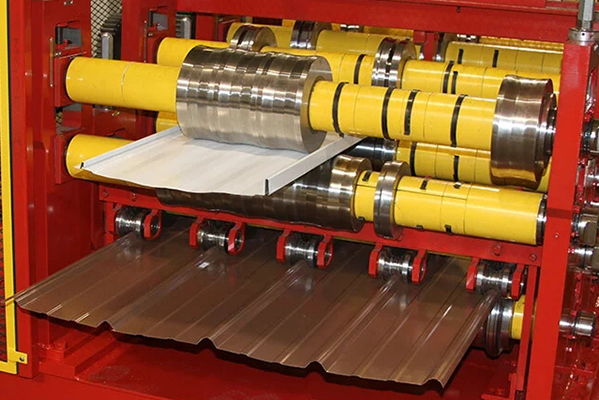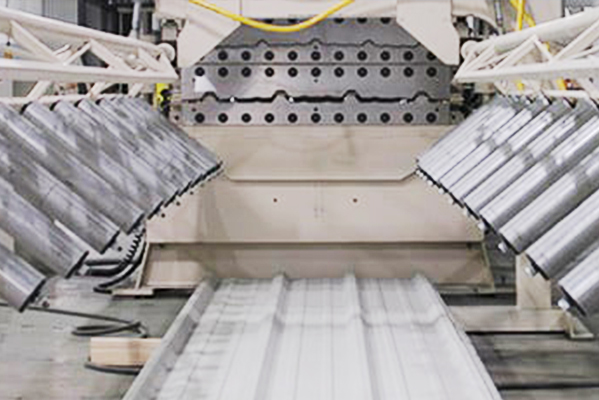Navigation Menu
Contact Us
- Email:
- info@wxavatar.com
- Address:
- Yurong Village, Yuqi Street, Huishan District, Wuxi, China.
Release Date:Jun 28, 2025 Visit:43 Source:Roll Forming Machine Factory
Hydraulic long folders are essential tools in sheet metal fabrication, offering precision and power for bending long and heavy materials. To keep these machines running smoothly and to maximize their service life, regular maintenance is critical. Proper upkeep not only helps reduce unexpected downtime but also ensures consistent performance and safe operation. Below are practical maintenance tips that can help extend the lifespan of hydraulic long folders.

1. Follow a Routine Maintenance Schedule
Establishing and adhering to a consistent maintenance schedule is key. Daily, weekly, and monthly checks should be clearly outlined and assigned to responsible personnel. Regular inspection routines make it easier to spot wear or irregularities before they lead to more serious issues.
2. Keep the Machine Clean
Dust, metal shavings, and oil residues can accumulate on and around the machine during operation. These contaminants may interfere with sensors, moving parts, and hydraulic systems. Cleaning the machine surface, guides, and work areas on a regular basis helps prevent unnecessary strain and wear.
3. Inspect and Replace Hydraulic Oil
Hydraulic fluid plays a critical role in the performance of long folders. Over time, the oil can degrade or become contaminated, which affects efficiency and may cause damage. Regularly monitor the oil level and quality, and follow the manufacturer’s guidelines for replacement intervals.
4. Check Hoses and Connections for Leaks
Hydraulic hoses and fittings should be inspected regularly for signs of leaks, cracks, or wear. Leaking hydraulic fluid not only reduces system pressure but also presents a slipping hazard and could signal potential component failure. Promptly address any issues discovered during inspection.
5. Lubricate Moving Components
Proper lubrication reduces friction and helps moving parts operate smoothly. Apply recommended lubricants to bearings, joints, and guide rails at specified intervals. Use only manufacturer-approved products to avoid compatibility issues that could damage components.
6. Monitor Cylinder and Ram Alignment
Misalignment in the hydraulic ram or cylinders can lead to uneven force distribution, which affects bending accuracy and puts stress on mechanical parts. Regularly check alignment and make necessary adjustments to ensure uniform motion and load handling.
7. Tighten Bolts and Fasteners
Due to vibration and load shifts during operation, bolts and fasteners can gradually loosen. Periodically tightening them helps maintain structural integrity and prevents premature wear or component displacement.
8. Test Electrical and Control Systems
Modern hydraulic folders often include PLC systems, touchscreens, and safety sensors. Test all electrical components regularly, including limit switches, emergency stops, and control panels. Replace or repair faulty units immediately to avoid operational delays or hazards.
9. Replace Worn Parts Promptly
Worn-out parts such as seals, blades, or bearings should be replaced as soon as wear is detected. Delaying replacement can lead to more serious damage and impact machine performance. Keep a stock of commonly used spare parts to minimize downtime.
10. Train Operators on Proper Use
Proper handling goes hand-in-hand with effective maintenance. Ensure all operators are trained in correct machine use, safety procedures, and basic troubleshooting. Well-informed personnel are less likely to misuse the machine and more likely to identify early signs of wear.

Conclusion
Extending the lifespan of a hydraulic long folder involves more than just fixing problems when they arise—it requires a proactive and consistent approach to maintenance. From hydraulic oil management and part lubrication to routine inspections and operator training, each step contributes to the longevity and performance of your equipment. By implementing these maintenance tips, manufacturers can reduce costs, enhance reliability, and maintain productivity over time.